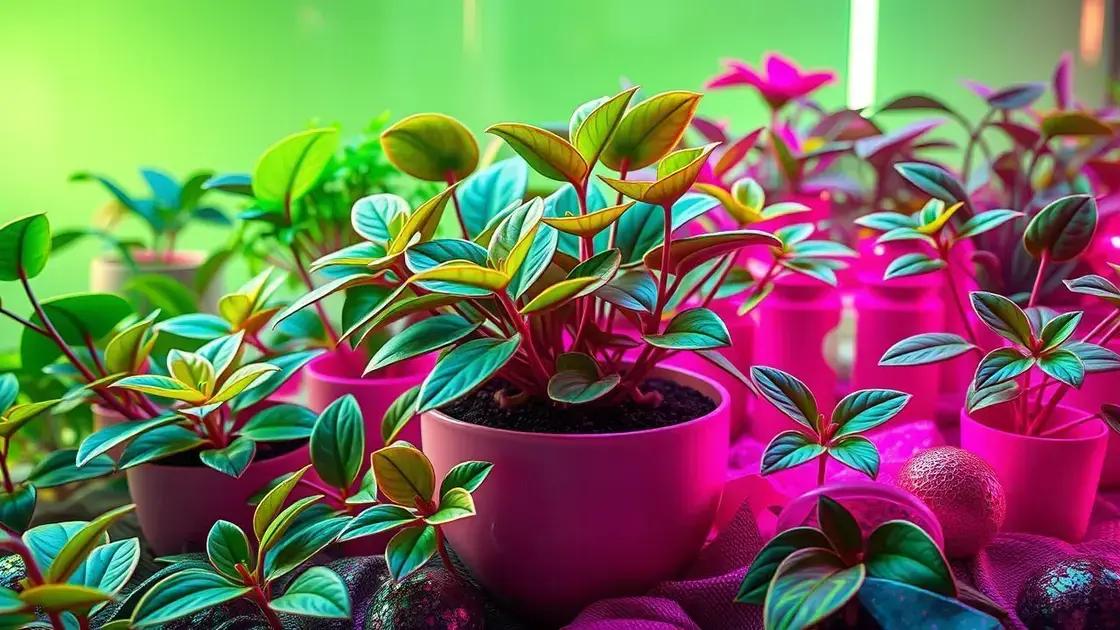How to Care for Peperomia Plant: 5 Must-Know Tips for Success
How to care for peperomia plant can feel overwhelming with so much information out there. However, understanding some fundamental principles can lead to rewarding results. Join me as we explore key insights that help your peperomia thrive in your home.
Table of Contents
ToggleEssential light requirements for your peperomia plant
Essential light requirements for your peperomia plant are crucial for healthy growth and vibrant foliage. Knowing how to provide the right lighting conditions will enhance the overall health of your plant, helping it thrive in your indoor garden.
Peperomia plants thrive in moderate to bright indirect light. Direct sunlight can be too harsh and may cause leaf scorch. Here are some key points to consider:
- **Location**: Place your peperomia near east or west-facing windows for optimal light exposure. Avoid south-facing windows to prevent leaf burn.
- **Light duration**: Aim for at least 6 hours of indirect sunlight per day to ensure your plant stays healthy.
- **Light quality**: Natural light is best, but if you’re short on windows, artificial grow lights can be an effective alternative.
- **Signs of inadequate light**: If your peperomia starts to stretch, has pale or yellowing leaves, or drops leaves, it may not be receiving enough light.
As with any plant care, understanding the specific light requirements for your peperomia will lead to a flourishing indoor garden. Here’s a quick comparison of different light conditions:
| Light Condition | Effect on Peperomia |
|---|---|
| Low Light | Slower growth, leggy stems |
| Bright Indirect Light | Healthy growth, vibrant leaves |
| Direct Sunlight | Leaf scorch, browning edges |
By observing your plant and adjusting its light conditions accordingly, you can ensure it receives the proper care. For more on choosing the right environment, you can check out exploring indoor gardening techniques.
In summary, providing the right light conditions is an essential aspect of effective peperomia care. Assess your environment and make adjustments to help your plant flourish.
How to water peperomia plants for healthy growth

How to water peperomia plants for healthy growth is essential to keeping your indoor garden thriving. Proper watering ensures that your peperomia stays hydrated without risking overwatering, which can lead to root rot.
Here are some key guidelines to follow:
- **Check the soil moisture**: Before watering, stick your finger about an inch into the soil. If it feels dry, it’s time to water.
- **Watering frequency**: Typically, watering every 1-2 weeks is sufficient, but this can vary based on humidity and temperature.
- **Use room temperature water**: Cold water may shock the plant. Warm, room temperature water is more beneficial.
- **Drainage is key**: Make sure your pot has drainage holes to allow excess water to escape, preventing root rot.
To help you visualize the watering process, follow these steps:
- Check soil moisture before watering.
- Water thoroughly until it drains from the bottom.
- Empty the saucer to prevent the plant from sitting in water.
Peperomias are sensitive to soggy soil, so it’s better to underwater than overwater. Here’s a quick summary of watering dos and don’ts:
| Watering Dos | Watering Don’ts |
|---|---|
| Check moisture regularly | Let your plant sit in standing water |
| Use well-draining soil | Water on a strict schedule without checking |
| Use a moisture meter for accuracy | Ignore environmental changes affecting moisture level |
With these watering tips, you can confidently care for your peperomia plant. For further advice on creating the ideal environment for your plants, check out exploring indoor gardening techniques.
Ultimately, understanding how to properly water your peperomia plants is key to fostering vibrant growth and health.
Practical tips for repotting and propagating peperomia
Practical tips for repotting and propagating peperomia can greatly enhance the growth and health of your plants. Knowing how to handle these tasks not only extends the lifespan of your peperomia but also allows you to share these beautiful plants with friends and family.
Repotting is essential when your plant outgrows its current pot or when the soil needs refreshing. Here are some key steps to follow:
When to repot your peperomia
- Once every 1-2 years, or when roots start to peek through the drainage holes.
- After noticing slow growth, which may indicate depleted soil nutrients.
- When the plant becomes top-heavy or unstable.
Steps for repotting
- Choose a pot that is 1-2 inches larger in diameter than the current one.
- Remove the plant from its pot gently, loosening the roots if necessary.
- Fill the new pot with fresh, well-draining soil.
- Position the plant in the center and fill around the roots with more soil.
- Water thoroughly and let it drain.
Propagation is another rewarding aspect of peperomia care. Here are effective methods:
Methods of propagation
- Leaf cuttings: Take a healthy leaf with a small section of stem and place it in soil or water until roots develop.
- Stem cuttings: Cut a healthy stem with at least one leaf and place it in soil or water to encourage new growth.
- Offsets: If your peperomia has offshoots, carefully separate them and pot them in their own containers.
To maximize your success, ensure you use a quality potting mix suitable for indoor plants. For more information on the best soil types, check out exploring indoor gardening techniques.
By applying these practical tips for repotting and propagating peperomia, you will foster a thriving plant while enjoying the satisfaction of nurturing and expanding your plant collection.
In conclusion
Caring for your peperomia plant is a rewarding experience that involves understanding its specific needs for light, water, repotting, and propagation. By following the guidelines discussed in this guide, you can ensure that your peperomia thrives in your indoor garden. Remember, the key to successful plant care lies in adapting to their unique requirements and being attentive to any signs of distress. For more insights and tips on enhancing your indoor garden, check out tips on enhancing your indoor garden.

